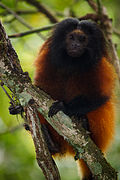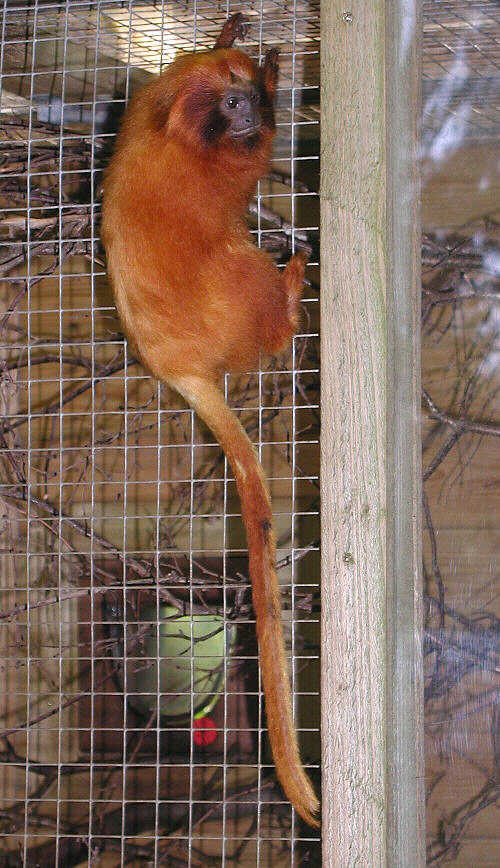Description
Living in the eastern rainforests of Brazil, like all other callitrichids they are arboreal. Lion tamarins weigh up to 900 grams (32 oz) and are about 30 cm (12 in) long, with tails about 45 cm (18 in) long. They jump through trees using their fingers to hold on to branches; they use their claws to dig under the bark to search for insects to eat. They also eat some snakes, small lizards, and small fruits. All are endangered or critically endangered, in part because their habitat has been severely disrupted by development.Lion tamarins tend to live in family groups, with both parents sharing different tasks of rearing the yearly twins born to them. The mother nurses her young every two to three hours, and the father carries the babies on his back.
Diurnal tree-dwellers, they sleep in tree cavities at night. They also seek shelter during the hottest part of the day.
Species list
The different species of lion tamarins are easily discernible from each other, based upon the coloration of their fur:[1]| Image | Scientific name | Common Name | Distribution | Description |
|---|---|---|---|---|
 |
Leontopithecus rosalia | Golden lion tamarin | southeastern Brazil | golden fur all over, mane sometimes darkening or black |
 |
Leontopithecus chrysomelas | Golden-headed lion tamarin | Bahia, Brazil | black fur with golden face, arms, and tail |
 |
Leontopithecus chrysopygus | Black lion tamarin or golden-rumped lion tamarin | São Paulo, Brazil | black fur with a dark gold rump |
 |
Leontopithecus caissara | Superagui lion tamarin or black-faced lion tamarin | southeastern Brazil | golden fur with black face, arms, and tails |

No comments:
Post a Comment
Note: Only a member of this blog may post a comment.